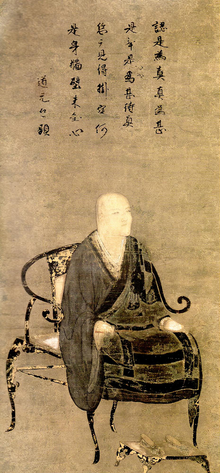Download a Handout with the Quotations from this Lecture
(The notes below are from A. H. Almaas’s overview of this lecture.)

Eihei Dogen Zenji is the founder of the Soto school of Zen in Japan. It is one of the two major schools in Japan; the other one is Rinzai. Dogen found a teacher in China, with whom he had his realization, then came back to Japan and started teaching. This teaching was the beginning of the Soto Sect in his own country. Dogen lived in the 13th century.
I am talking about him mostly to introduce him to the general spiritual culture these days. He is not well known in most circles, and not understood even by most Zen practitioners. I want to introduce him because I think he has a lot to offer, many kinds of realizations and spiritual insights not common in spiritual circles, which are not only important, but many of them are relevant to our times, and also quite a corrective to the spiritualty commonly practiced these days.
I will discuss some of the teachings of Dogen that I know or understand from direct experience. For I don’t understand many things he taught, and cannot hence discuss them.I will be giving my understanding of these teachings for when it comes to Dogen there is no one common understanding of him. Furthermore, I won’t be teaching Zen or Dogen, but giving my understanding of some of his teachings.
Part of this introduction is the discussion of realizations he taught that show us the amazing potential of spirituality, to expand our spiritual horizons. There is a tendency to know one teaching or tradition and end up believing it is the only valid view or experience of reality. I want to emphasize a wider view of spiritual work.
